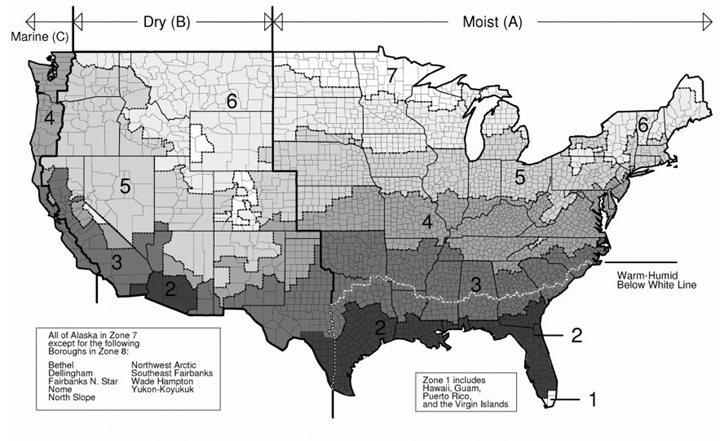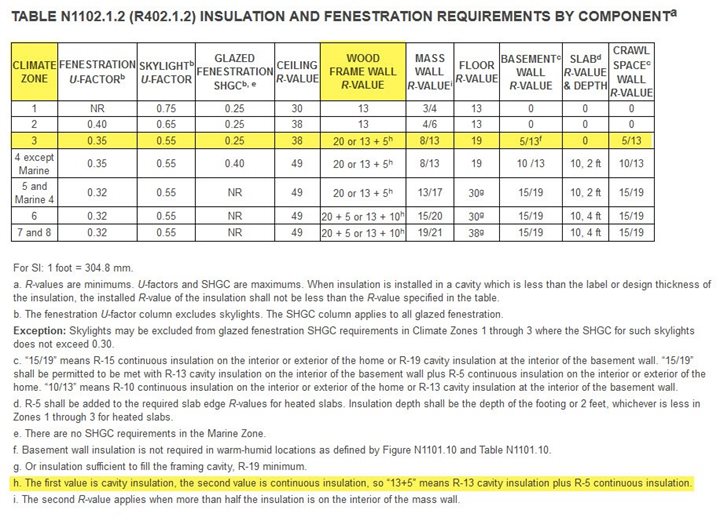When building a new home, most of us are focused on what the home’s interior will look like. We are excited to choose our colors, cabinets, flooring, and countertops. But do we ever consider what is inside our walls?

'Brocreative / Shutterstock.com'
Our home has both exterior and interior walls. The exterior walls are part of the homes thermal envelope. Composed of studs and insulation, walls are required to be constructed to standards, called building codes. Most of us take for granted that our builder is constructing our home to adopted building codes. We also take for granted that our walls will be thermally efficient, keeping conditioned space inside the home at our preferred temperature. Why can we rely on this?
South Carolina adopts the International Residential Code
In 2014, South Carolina adopted the International Residential Code which went into effect on July 1, 2016. These international standards set all types of baselines for residential construction. Should you care to read them, you can find them online.
According to South Carolina Department of Health and Environment, “The International Code Series was developed as a joint project by the Southern Building Code Congress, International, the International Conference of Building Officials and the Building Officials and Code Administrators International and will replace the Standard, National and Uniform Building Code Series. The 1997 Editions of the Standard, National and Uniform Codes (which were regional), and the 1995 Edition of the CABO One and Two Family Dwelling Code (which was national) were the last to be published. The International Building Code Series will replace those documents as a single set of National Codes. All codes training and Code Enforcement Officer certification examinations will be based in the International Code series.”

Image from International Code Council Website (Source)
What are the required wall R-values for South Carolina?
South Carolina lies in the 3A zone where we have at least four months with mean temperatures over 50 degrees. We have a damp, humid climate and the applicable codes reflect our climatic factors. Codes require that our walls be constructed to help save energy and make our homes healthy and safe.
We assume that our home will be well insulated and built to code. However, as Mike Holmes, one internationally recognized homebuilding celebrity is often heard to say, “Minimum codes are just that, minimums.” Holmes makes the case that we might consider beefing up the insulation in our homes to increase our energy savings.
In 2010 on the National Post website, Holmes, wrote about building code,
“Basically, it’s a set of rules that have developed to govern the way houses are built...Minimum code makes sure a house won’t fall down...To my mind, minimum code is about minimum value…
Some code does relate directly to efficiency — minimum R-value for insulation...If we add more insulation in new buildings, that means less heating and cooling costs....
Minimum isn’t ideal — and you’ve heard me complain about minimum code for years. Hey, don’t get me wrong, minimum code is better than no code.”
South Carolina has also adopted the 2012 International Energy Conservations Codes. [Click if you wish to download the IECC Compliance Guide for Homes in South Carolina.] These codes are based on the International Residential Building Codes and are projected to save money for South Carolinians, “2012 International Energy Conservation Code (IECC) yields positive benefits for South Carolina homeowners. Moving to the 2012 IECC from the 2009 IECC is cost-effective over a 30-year life cycle. On average, South Carolina homeowners will save $4,366 with the 2012 IECC.”
The International Residential Code provides the following standards for buildings in Zone 3. We’ve included the table from the codes and highlighted information related to South Carolina.

Minimum R-value per code for wood framed walls is R-20. The International Residential Code requires “20 or 13 + 5h. The first value is the cavity insulation, the second value is continuous insulation so 13 + 5 means R-13 cavity insulation plus R-5 continuous insulation.” “Continuous Insulation is insulating material that is continuous across all structural members without thermal bridges other than fasteners and service openings. It is installed on the interior or exterior, or is integral to any opaque surface, of the building envelope.”
Ask your builder to demonstrate how they meet or exceed code for walls
When looking at homes by various builders, ask them about the wall’s thermal rating. Ask to see examples of their wall construction so you can comprehend how the builder is complying with both the International Residential Code and the 2012 International Energy Conservation Code.
Lowcountry builders are providing smart solutions to keep walls compliant. Brock Built Homes uses spray foam insulation. Their “GreenSmart program utilizes a Spray-On Fiberglass Insulation System for thermal and sound control. When this system is sprayed into a wall cavity, it fills around pipes, wires, electrical outlets and other objects, virtually eliminating gaps and voids, and significantly reduces air infiltration. The increased density of fiberglass delivers higher R-values, and provides excellent noise control properties.”
Centex provides their homeowners with an Orientation before walls are finished. Centex says, “During Orientation, you will get to know your new home by seeing the mechanical, electrical and plumbing inside the unfinished walls. This helps create an understanding of where things are and how they work.”
While these examples represent only two of the more than 50 homebuilders in the Lowcountry we promote, you’ll find all the building professionals we include in Charleston New Homes Guide build homes which are code compliant, and in many cases, beyond code. Their goal is for you to live happily in the home which they are constructing for you. So, go ahead, consider the walls!
###
Thank you for reading and sharing our articles from The Greater Charleston New Homes Guide. Our business is to know Charleston, SC's new home construction, home builders, neighborhoods, and homes so we may assist you as you take your new construction home journey. Please take the time to explore our library of helpful tips, guides and insights. The Greater Charleston New Homes Guide is considered the most comprehensive and reliable resource to new home construction, builders, neighborhoods, and homes throughout the Lowcountry.
6.17
Tagged as: Home Maintenance
Categories: The Guide Tools